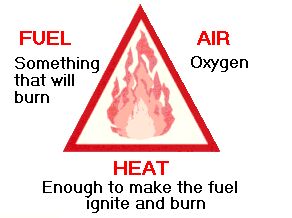Category Archives: Science
Circuits
A cell has two ends, labelled + (positive) and – (negative). A cell pushes the electric current from the positive terminal round to the negative one. This is the way that conventional current flows
Two or more cells can be connected end-to-end to make a battery. A typical cell has a voltage of 1.5 volts (we write this as 1.5 V). By connecting cells in series, we can makes batteries with 3 V, 6 V and so on. Each battery is labelled with its voltage. This tells us about the ‘push’ it gives to make the current flow. A 6 V battery gives a bigger push than a 1.5 V cell. Sometimes we call a single cell a ‘battery’, although technically we ought to say ‘cell’.
Answer the following questions:
1) What is a voltage?
2) What is the difference between series and parallel circuit?
Burning
Combustion is the scientific word for burning. It is a chemical reaction between a substance and oxygen.You know that energy is given out as you can feel the heat and see the light. The fire triangle tells us what is needed for combustion to happen. If one or more sides of the triangle are missing, then combustion cannot take place.
Answer the following questions:
1) By removing any side of the fire triangle, a fire will____.
2) You will use a ___________ _________ in a science lab to heat things.
Properties of Metals and Nonmetals
Properties of metals:
- Metals are malleable
- They are also ductile
- Good conductors of Heat & Electricity
- They are sonorous
Properties of Non- metals:
- Non- malleable
- Non- ductile
- Poor conductors of Heat & Electricity
- Non- sonorous
Watch this video for better understanding
Where are metals used in our daily life and why?
The Skeleton
We are actually born with about 300 bones, but many of these fuse together as the child grows up. These bones support our body and allow us to sit,stand and make any movement.An adult human skeleton consists of 206 bones.Few may have little more or less number of bones in the body.The longest bone in a human body is the femur whereas the smallest bone is the stirrup bone inside the ear. Watch this video for more information.
Which skeleton protects our lungs and our heart?
Density
Wondering how do you float on water. Well, it’s because of DENSITY. Density is how heavy an object is for it’s size.
Density=mass/volume
